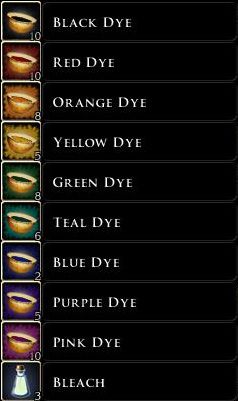Heavy and solid, this well-formed tome bears a sheet of brass upon its cover, stamped in the shape of a gear, along with a rather unintelligible title. The cover-page within is significantly more readable.
((This is an ongoing project of mine to create a comprehensive illustrated crafting tutorial and may be subject to restructuring. I'll do my best to provide consistent updates, but if anyone has questions or comments, please PM me: coauthors may be possible. Also, if anyone knows Lojban, I'd appreciate input on the title. 
Cheers,
Kit))
le cukta cu clinoi sefi'e fi skezu'e vau
The Gondsman's Guide to Geneses : A Layman's Manual to Fabrication
Authored by Artifax J. Frazer
Edition Nought-point-One
<<Insert date of printing here>>
*The price of this manuscript is not to exceed production costs*
*Any required subsidisation may be brought to the Fabricator's Collective*
Chapter Contents:
0. Introduction
1. Tailoring
2. Armor-craft
3. Arms Fabrication
4. Basics of Alchemy
5. Magical Enhancement
10. Mechanical Systems and Devices
11. Resource Procurement
12. Appendices:
a) Materials
b) Schema
c) Organizations and Facilities
Aftword
DISCLAIMER: By utilizing this guide, the reader exonerates the Fabricator's Collective as well as any publishers or authors for personal inconvenience or loss of limb or property. Anyone following this guide is advised to read the relevant chapter thoroughly and completely before attempting to act upon its contents. This guide and its authors and publishers are not liable for any loss of money, property, or other concerns if instructions are not correctly read and followed. While the authors and publishers of this guide attempt to keep all data correct and up-to-date, it is anticipated that facts may have be miscalculated or unintentionally false. Please see your local Fabricator's Collective representative to ensure that this edition is current, and for any errata that should be changed before continued use.
The Gondsman's Guide to Geneses : A Layman's Manual to Fabrication
Authored by Artifax J. Frazer
Edition Nought-point-One
<<Insert date of printing here>>
*The price of this manuscript is not to exceed production costs*
*Any required subsidisation may be brought to the Fabricator's Collective*
Chapter Contents:
0. Introduction
1. Tailoring
2. Armor-craft
3. Arms Fabrication
4. Basics of Alchemy
5. Magical Enhancement
10. Mechanical Systems and Devices
11. Resource Procurement
12. Appendices:
a) Materials
b) Schema
c) Organizations and Facilities
Aftword
DISCLAIMER: By utilizing this guide, the reader exonerates the Fabricator's Collective as well as any publishers or authors for personal inconvenience or loss of limb or property. Anyone following this guide is advised to read the relevant chapter thoroughly and completely before attempting to act upon its contents. This guide and its authors and publishers are not liable for any loss of money, property, or other concerns if instructions are not correctly read and followed. While the authors and publishers of this guide attempt to keep all data correct and up-to-date, it is anticipated that facts may have be miscalculated or unintentionally false. Please see your local Fabricator's Collective representative to ensure that this edition is current, and for any errata that should be changed before continued use.

Cheers,
Kit))




Comment